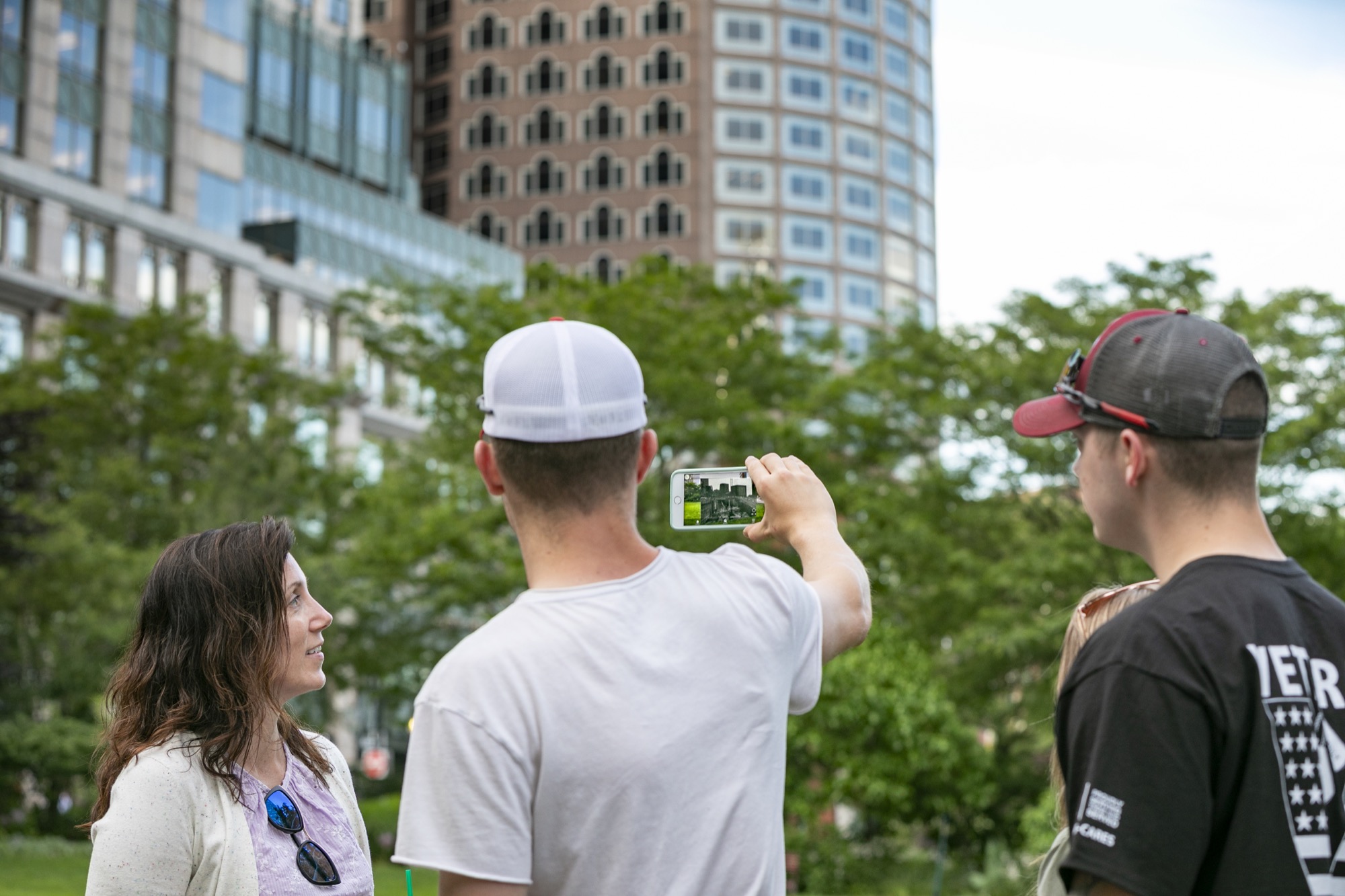
Augmented Reality Art, 2019
Nancy Baker Cahill, John Craig Freeman, and Will Pappenheimer
The Greenway Conservancy’s Augmented Reality (AR) exhibit blends interactive digital elements into our real-world environments through the overlay of historical imagery responding to the ever-changing nature of what once was a major transportation corridor through downtown Boston.
In a curatorial partnership with Boston Cyberarts and Hoverlay, the Conservancy commissioned three prominent AR artists and Amy D. Finstein, a local historian to conceptually explore the themes of transportation and the automobile superimposed with views of The Greenway.
The historic photographs shown within the augmented reality exhibit narrate more than a century of growth and change along the Rose Kennedy Greenway. These images capture the city’s changing economic prospects, its accommodations for new modes of transportation, and its embrace of city planning and modern engineering to address successive eras of challenges.


 Nancy Baker Cahilfounder of 4th Wall, a free AR app. A 2018 TEDx speaker, she was also profiled in Bloomberg’s Media Art + Technology series. She is a Desert X 2019 Biennial artist and received an LA City Hall “Impact Maker to Watch” Award.
Nancy Baker Cahilfounder of 4th Wall, a free AR app. A 2018 TEDx speaker, she was also profiled in Bloomberg’s Media Art + Technology series. She is a Desert X 2019 Biennial artist and received an LA City Hall “Impact Maker to Watch” Award. John Craig Freeman uses emerging technologies to produce large-scale public work at sites where the forces of globalization are impacting the lives of individuals in local communities. He seeks to expand the notion of public by exploring how digital technology and mobile networks are transforming our sense of place.
John Craig Freeman uses emerging technologies to produce large-scale public work at sites where the forces of globalization are impacting the lives of individuals in local communities. He seeks to expand the notion of public by exploring how digital technology and mobile networks are transforming our sense of place. Will Pappenheimer is a Brooklyn artist working in new media, performance and installation. He has pioneered augmented reality art for nine years. His projects have been featured at venues including the Whitney Museum of American Art, LACMA, Los Angeles, the San Francisco MOMA, and Bloomberg TV’s Art + Technology series.
Will Pappenheimer is a Brooklyn artist working in new media, performance and installation. He has pioneered augmented reality art for nine years. His projects have been featured at venues including the Whitney Museum of American Art, LACMA, Los Angeles, the San Francisco MOMA, and Bloomberg TV’s Art + Technology series.